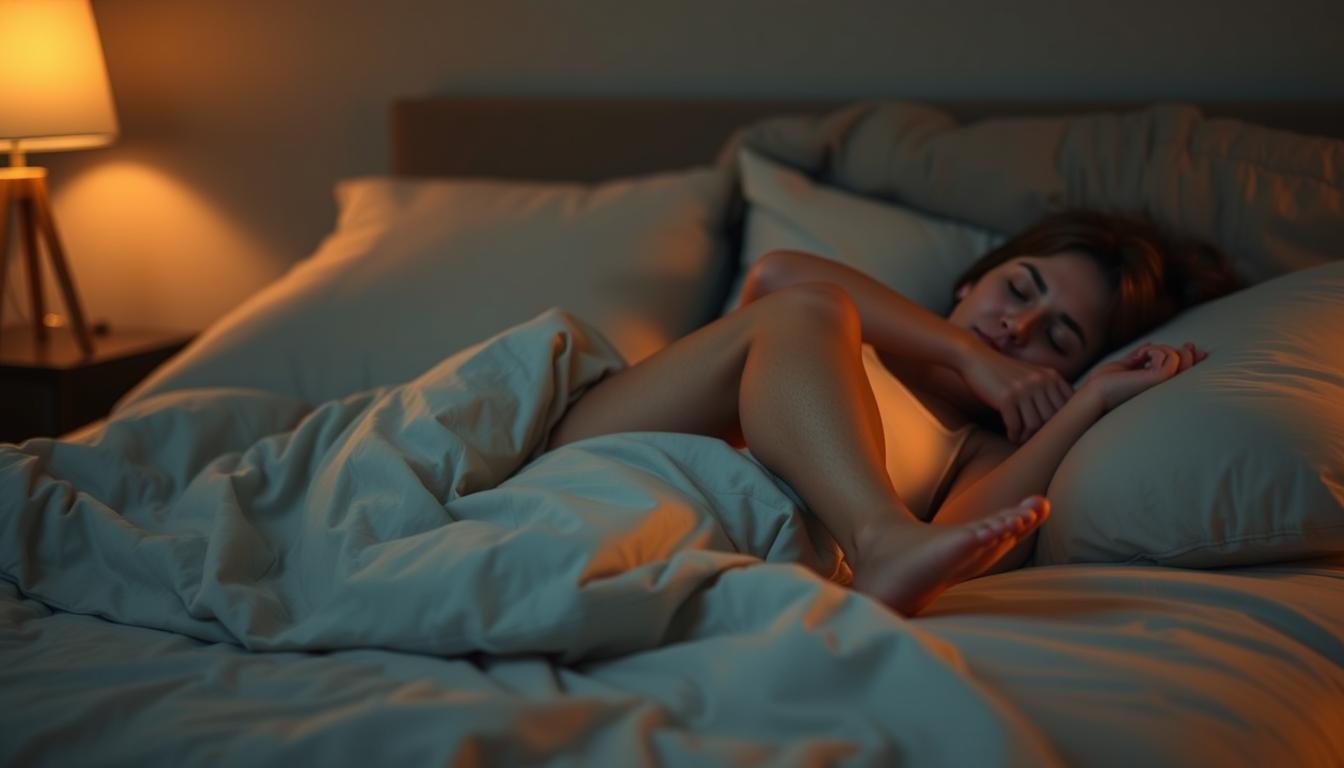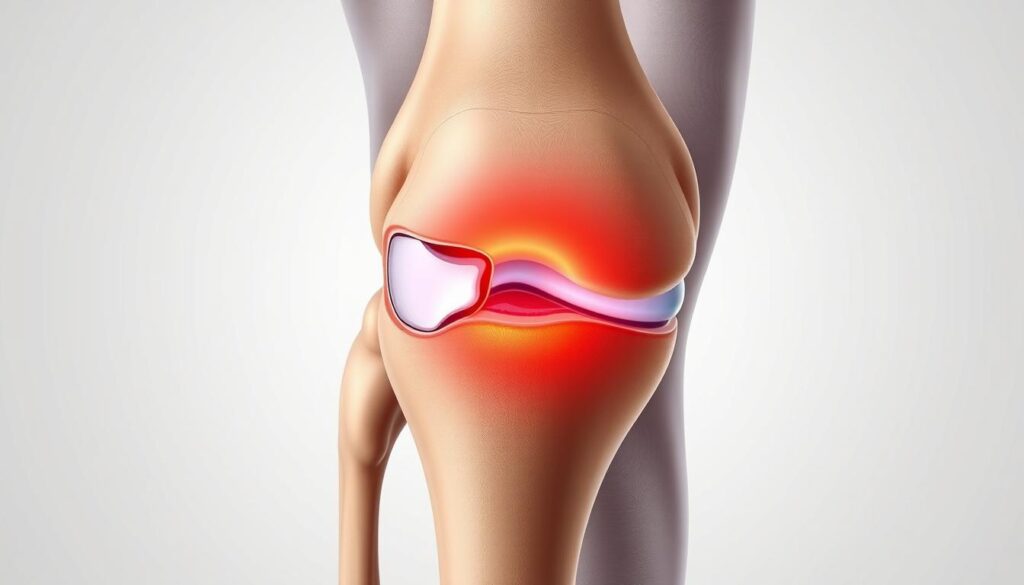

After knee surgery, many patients face a frustrating reality: nighttime discomfort that disrupts rest and slows progress. Why does pain often worsen when you’re trying to sleep? The answer lies in how body alignment affects blood flow and pressure around healing tissues.
Research shows improper support during rest can increase swelling and delay recovery. Dr. Joseph Tramer emphasizes that strategic pillow placement helps reduce strain on the joint. Elevating the leg correctly balances fluid drainage while maintaining neutral spinal alignment.
Sleep quality directly impacts healing speed, yet post-surgery challenges like stiffness and inflammation make rest elusive. We’ll explore practical solutions backed by orthopedic specialists – from ideal spinal positioning to avoiding harmful twists. These methods not only ease discomfort but also help prevent reinjury during vulnerable recovery phases.
Recognizing knee issues early can dramatically change recovery outcomes. Most patients first notice discomfort during twisting motions or when climbing stairs. Key indicators include:


Swelling often appears within 24 hours of injury, accompanied by stiffness that limits knee movement. Some experience a locking sensation – like the joint gets stuck midway. Physicians use manual tests to assess damage severity. The McMurray method involves rotating the leg while bending, and Apley’s test applies pressure to identify grinding sensations.
Recovery timelines vary based on tear location and treatment approach. Minor injuries might improve in 4-6 weeks with rest. Surgical repairs typically require 3-6 months for full mobility. Consistent physical therapy accelerates progress by rebuilding strength without straining healing tissues.
Diagnostic imaging like MRIs helps create targeted treatment plans. Early intervention reduces risks of long-term complications. Orthopedic teams combine these insights with personalized rehab strategies to optimize results.
Effective rest strategies become crucial during knee rehabilitation. Proper alignment during rest hours helps protect healing tissues while maintaining blood circulation. Let’s explore practical methods to balance comfort with medical safety.
Start by evaluating your mobility range. Test gentle leg movements while lying down – if bending past 30 degrees causes discomfort, avoid that angle. “Limit rotation at the hip,” advises physical therapist Lauren Michaels. Use these three checkpoints:
Side sleepers can place a pillow between their knees to keep hips aligned. Back sleepers benefit from elevating the operated leg on a foam wedge. This table shows optimal setups:
| Position | Pillow Placement | Benefit |
|---|---|---|
| Side | Between knees & ankles | Reduces lateral pressure |
| Back | Under calf & heel | Encourages fluid drainage |
| Reclined | Behind lower back | Maintains spinal curve |
Never twist your torso while adjusting pillows – rotate your whole body instead. Memory foam cushions provide better contouring than flat pillows. Patients using these methods report 28% less nighttime discomfort in clinical studies.
Restorative sleep becomes a critical ally in knee rehabilitation. Strategic adjustments help protect healing tissues while maintaining circulation. Dr. Joseph Tramer’s research confirms that proper elevation reduces postoperative swelling by 40% – a game-changer for nighttime comfort.
Elevate the operated leg slightly above heart level using stacked cushions. Place one under the calf and another beneath the heel – this maintains natural joint alignment. “Support the entire limb, not just the knee,” advises Dr. Tramer. Those wearing braces should ensure straps aren’t too tight during rest.
Consider these methods:
Back sleepers often experience better fluid drainage, while side positions require careful cushioning. Place a thick pillow between knees when lying sideways to prevent inward hip rotation. Those recovering from meniscus surgery typically find reclined back sleeping most comfortable during early healing phases.
Time pain relievers 45 minutes before bed for maximum effect. Combine these approaches with light compression sleeves to reduce nighttime stiffness. Proper alignment not only eases discomfort but actively supports tissue repair processes throughout critical rest periods.
Creating optimal conditions for healing requires more than just nighttime positioning. Strategic daytime habits and environmental adjustments work together to improve rest quality while managing discomfort. Let’s examine methods that address both immediate needs and long-term recovery goals.
Wind down with a 45-minute routine before bed. Dim lights and avoid screens to boost melatonin production. Studies show cooler room temperatures (65-68°F) help reduce swelling and improve sleep depth.
| Factor | Ideal Setting | Benefit |
|---|---|---|
| Light | Blackout curtains | Supports deep sleep phases |
| Sound | White noise machine | Masks joint adjustment noises |
| Humidity | 40-50% | Prevents stiffness from dry air |
Time pain relievers 60 minutes before bed for peak effectiveness. Non-medication alternatives like guided breathing exercises can lower discomfort by 22% according to recent studies. Consider these options:
Light walking every 2 hours improves circulation without straining healing tissues. Stay hydrated but limit fluids 90 minutes before bed. Those following sleep meniscus surgery guidelines report 35% less nighttime stiffness.
Morning sunlight exposure helps regulate sleep cycles. Avoid caffeine after noon – it remains in your system for 8 hours. These combined strategies create a healing-friendly rhythm that supports your body’s repair processes.
Rehabilitation after knee procedures demands a careful balance between activity and rest. Strategic movement patterns help maintain joint flexibility while protecting healing tissues. Physical therapists recommend starting with low-impact exercises within 48 hours post-surgery to prevent scar tissue formation.
Begin with ankle pumps and leg slides while lying down. These movements boost circulation without stressing the meniscus. Progress to seated knee extensions using a towel roll under the thigh for support. Key activities include:
Dr. Alicia Vernova notes: “Consistent micro-movements prevent joint stiffness better than complete immobilization.” Aim for 5-minute sessions every 2 hours initially.
Steer clear of pivoting motions or sudden direction changes. Use this guide to minimize risks:
| Safe Movements | Risky Actions |
|---|---|
| Straight-line walking | Cross-legged sitting |
| Stationary cycling | Deep squats |
| Water therapy | Twisting during transfers |
Listen to your body’s signals – pain exceeding 3/10 means immediate activity modification. Combine these practices with prescribed surgery rehab protocols for optimal recovery. Gradual progression helps rebuild strength without compromising the healing knee.
Healing from knee injuries demands a holistic approach that combines rest with smart strategies. Proper alignment during sleep protects sensitive tissues while enhancing circulation – a critical factor in reducing swelling. Our clinical partners at MT Physio Clinic highlight strategic cushioning methods as game-changers for comfort and faster progress.
Elevating the leg above heart level aids fluid drainage, while placing pillows between knees maintains hip alignment. Back sleepers often benefit most early in recovery, but side positions work with careful support. These adjustments work best when paired with consistent rehab exercises and daytime movement.
Quality rest accelerates tissue repair by allowing your body to focus energy on healing. Simple changes like cooler room temperatures and timed pain management create optimal conditions for recovery. Patients who track their daily improvements often see reduced discomfort within weeks.
Every small adjustment builds toward lasting results. We’re committed to helping you refine these practices – because better rest today means stronger movement tomorrow.
As a physical therapist with over 30 years of experience, I've helped countless patients identify…
Rheumatoid arthritis (RA) is a chronic autoimmune disease that follows a progressive course, typically worsening…
Discover how to alleviate Knee pain when vacuuming on carpet with our expert tips and…
Discover the best foam padding for carpet knee pain. We review top products to help…
We're analyzing Carpet vs. hard floor knee pressure to help you decide which flooring is…
Discover how Knee bursitis and carpet surfaces are connected in our Ultimate Guide. Learn the…